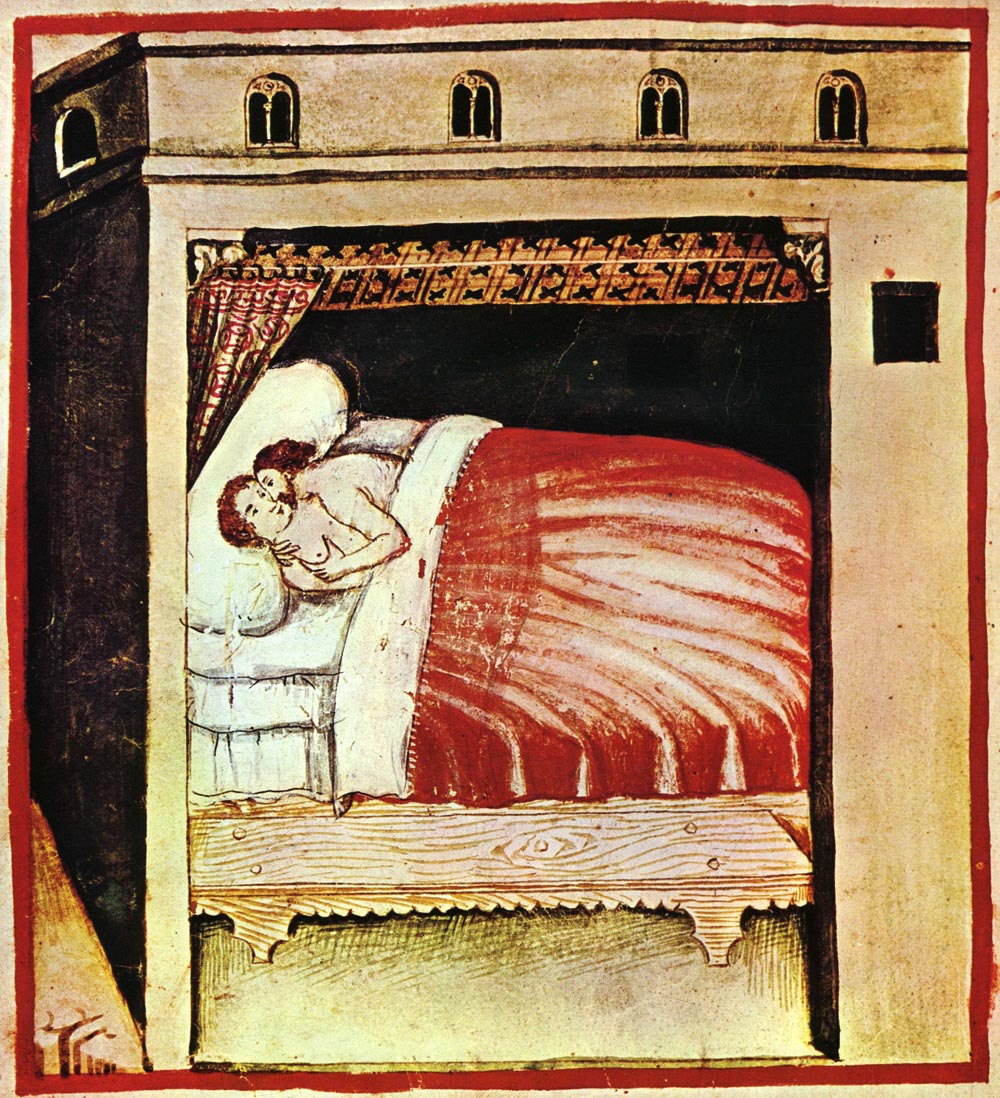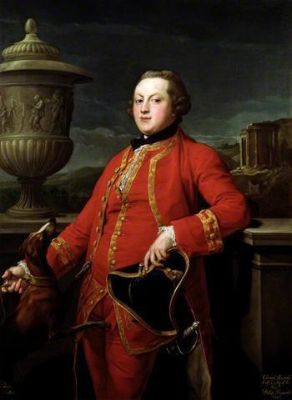|
Edward Weld (Senior)
Edward Weld (1705 8 December 1761) was an English gentleman of the landed gentry and a member of an old recusant family. Weld is notable for two trials, one when he was accused of impotency, the other for treason at the time of the Jacobite rising of 1745. He also made significant improvements at Lulworth Castle. Early life Born at East Lulworth, Weld was the third and oldest surviving son of Humphrey Weld (died 1722) of Lulworth Castle, a great-nephew of Humphrey Weld, a Member of parliament who in 1641 had bought the Lulworth Estate on the Jurassic Coast. His mother was Margaret Simeons, a daughter of Sir James Simeons of Chilworth. He was descended from Sir Humphrey Weld, a City of London merchant who was Sheriff of London in 1599 and Lord Mayor of London in 1608, originally from a family in Shropshire. Weld succeeded his father in 1722. On coming of age, he was the fourth generation of Welds to own the Lulworth estate. A practising Roman Catholic and a member of the ge ... [...More Info...] [...Related Items...] OR: [Wikipedia] [Google] [Baidu] |
Landed Gentry
The landed gentry, or the ''gentry'', is a largely historical British social class of landowners who could live entirely from rental income, or at least had a country estate. While distinct from, and socially below, the British peerage, their economic base in land was often similar, and some of the landed gentry were wealthier than some peers. Many gentry were close relatives of peers, and it was not uncommon for gentry to marry into peerage. It is the British element of the wider European class of gentry. With or without noble title, owning rural land estates often brought with it the legal rights of lord of the manor, and the less formal name or title of ''squire'', in Scotland laird. Generally lands passed by primogeniture, and the inheritances of daughters and younger sons were in cash or stocks, and relatively small. Typically the gentry farmed some of their land, as well as exploiting timber, minerals such as coal, and owning mills and other sources of income, but ... [...More Info...] [...Related Items...] OR: [Wikipedia] [Google] [Baidu] |
English Country House
An English country house is a large house or mansion in the English countryside. Such houses were often owned by individuals who also owned a town house. This allowed them to spend time in the country and in the city—hence, for these people, the term distinguished between town and country. However, the term also encompasses houses that were, and often still are, the full-time residence for the landed gentry who ruled rural Britain until the Reform Act 1832. Frequently, the formal business of the counties was transacted in these country houses, having functional antecedents in manor houses. With large numbers of indoor and outdoor staff, country houses were important as places of employment for many rural communities. In turn, until the agricultural depressions of the 1870s, the estates, of which country houses were the hub, provided their owners with incomes. However, the late 19th and early 20th centuries were the swansong of the traditional English country house lifest ... [...More Info...] [...Related Items...] OR: [Wikipedia] [Google] [Baidu] |
Consummation
In many traditions and statutes of civil or religious law, the consummation of a marriage, often called simply ''consummation'', is the first (or first officially credited) act of sexual intercourse between two people, following their marriage to each other. The definition of consummation usually refers to penile-vaginal sexual penetration, but some religious doctrines hold that there is an additional requirement that no contraception must be used. The religious, cultural, or legal significance of consummation may arise from theories of marriage as having the purpose of producing legally recognized descendants of the partners, or of providing sanction to their sexual acts together, or both, and its absence may amount to treating a marriage ''ceremony'' as falling short of ''completing'' the state of being married, or as creating a marriage which may later be repudiated. Thus in some legal systems a marriage may be annulled if it has not been consummated. Consummation is also rele ... [...More Info...] [...Related Items...] OR: [Wikipedia] [Google] [Baidu] |
Canterbury
Canterbury (, ) is a City status in the United Kingdom, cathedral city and UNESCO World Heritage Site, situated in the heart of the City of Canterbury local government district of Kent, England. It lies on the River Stour, Kent, River Stour. The Archbishop of Canterbury is the primate (bishop), primate of the Church of England and the worldwide Anglican Communion owing to the importance of Augustine of Canterbury, St Augustine, who served as the apostle to the Anglo-Saxon paganism, pagan Kingdom of Kent around the turn of the 7th century. The city's Canterbury Cathedral, cathedral became a major focus of Christian pilgrimage, pilgrimage following the 1170 Martyr of the Faith, martyrdom of Thomas Becket, although it had already been a well-trodden pilgrim destination since the murder of Ælfheah of Canterbury, St Alphege by the men of cnut, King Canute in 1012. A journey of pilgrims to Becket's shrine served as the narrative frame, frame for Geoffrey Chaucer's 14th-century Wes ... [...More Info...] [...Related Items...] OR: [Wikipedia] [Google] [Baidu] |
Arches Court
The Arches Court, presided over by the Dean of Arches, is an ecclesiastical court of the Church of England covering the Province of Canterbury. Its equivalent in the Province of York is the Chancery Court. It takes its name from the street-level arched windows of the old crypt of St Mary-le-Bow (''Sancta Maria de Arcubus'') where the court still sits. Provincial Court The Court of Arches is the provincial Court of Appeal for Canterbury. It has both appellate and original jurisdiction. It is presided over by the Dean of the Arches, who is styled ''The Right Honourable and Right Worshipful the Official Principal and Dean of the Arches''. The dean must be a barrister of ten years' High Court standing or the holder or former holder of high judicial office. The appointment is made by the two archbishops jointly. At various times the court has sat in the church of St Mary-le-Bow (''Sancta Maria de arcubus,'' formerly the archbishop's principal peculier in London), whose arches ... [...More Info...] [...Related Items...] OR: [Wikipedia] [Google] [Baidu] |
Edward Howard, 9th Duke Of Norfolk
Edward Howard, 9th Duke of Norfolk (5 June 1686 – 20 September 1777), of Worksop Manor in Nottinghamshire and of Norfolk House in London, was a British peer, politician and hereditary Earl Marshal. Origins He was the third of the five sons of Lord Thomas Howard (d.1689), of Worksop (younger brother of Henry Howard, 7th Duke of Norfolk (d.1701), both sons of Henry Howard, 6th Duke of Norfolk (d.1684)) by his wife Mary Elizabeth Savile (d.1732). An elder brother Henry Howard (1684-1720) was Roman Catholic Bishop-elect before his death. His younger brothers were Richard Howard (1687-1722) who died in Rome, where he was a Canon of St. Peter Basilica and Philip Howard (1688-1750). Career He took part in the Jacobite Rising of 1715, one of several English noblemen to do so. Through the intercession of his brother, he escaped the punishment for high treason. He succeeded as 9th Duke of Norfolk in 1732, after the death of his childless elder brother Thomas Howard, 8th Duke of Norfol ... [...More Info...] [...Related Items...] OR: [Wikipedia] [Google] [Baidu] |
Walter Aston, 4th Lord Aston Of Forfar
Walter Aston, 4th Lord Aston of Forfar (1660 or 1661 – 4 April 1748) was the eldest surviving son of Walter Aston, 3rd Lord Aston of Forfar, and his first wife Eleanor Blount of Soddington, daughter of Sir Walter Blount, 1st Baronet. Biography In 1714, he succeeded his father as Lord Aston of Forfar in the peerage of Scotland. Despite the title, they were a Staffordshire family whose seat was at Tixall. He married Lady Mary Howard, daughter of Lord Thomas Howard and Mary Savile, and sister of Thomas Howard, 8th Duke of Norfolk and Edward Howard, 9th Duke of Norfolk, by whom he had five sons and six daughters, most of whom died in infancy. She died in 1723 during the birth of their 11th child, James, who would succeed him as Lord Aston of Forfar. Two daughters also reached adult life: Margaret, who became a nun, and Catherine, who married Edward Weld of Lulworth Castle, Dorset. The Astons, like the Howards, were staunch Roman Catholics: during the outbreak of anti-Catholic ... [...More Info...] [...Related Items...] OR: [Wikipedia] [Google] [Baidu] |
Castellated
A battlement in defensive architecture, such as that of city walls or castles, comprises a parapet (i.e., a defensive low wall between chest-height and head-height), in which gaps or indentations, which are often rectangular, occur at intervals to allow for the launch of arrows or other projectiles from within the defences. These gaps are termed " crenels" (also known as ''carnels'', or ''embrasures''), and a wall or building with them is called crenellated; alternative (older) terms are castellated and embattled. The act of adding crenels to a previously unbroken parapet is termed crenellation. The function of battlements in war is to protect the defenders by giving them something to hide behind, from which they can pop out to launch their own missiles. A defensive building might be designed and built with battlements, or a manor house might be fortified by adding battlements, where no parapet previously existed, or cutting crenellations into its existing parapet wall. A d ... [...More Info...] [...Related Items...] OR: [Wikipedia] [Google] [Baidu] |
Jacobean Architecture
The Jacobean style is the second phase of Renaissance architecture in England, following the Elizabethan style. It is named after King James VI and I, with whose reign (1603–1625 in England) it is associated. At the start of James' reign there was little stylistic break in architecture, as Elizabethan trends continued their development. However, his death in 1625 came as a decisive change towards more classical architecture, with Italian influence, was in progress, led by Inigo Jones; the style this began is sometimes called Stuart architecture, or English Baroque (though the latter term may be regarded as starting later). Courtiers continued to build large prodigy houses, even though James spent less time on summer progresses round his realm than Elizabeth had. The influence of Flemish and German Northern Mannerism increased, now often executed by immigrant craftsmen and artists, rather than obtained from books as in the previous reign. There continued to be very little build ... [...More Info...] [...Related Items...] OR: [Wikipedia] [Google] [Baidu] |
Mock Castle
A castle is a type of fortified structure built during the Middle Ages predominantly by the nobility or royalty and by military orders. Scholars debate the scope of the word ''castle'', but usually consider it to be the private fortified residence of a lord or noble. This is distinct from a palace, which is not fortified; from a fortress, which was not always a residence for royalty or nobility; from a ''pleasance'' which was a walled-in residence for nobility, but not adequately fortified; and from a fortified settlement, which was a public defence – though there are many similarities among these types of construction. Use of the term has varied over time and has also been applied to structures such as hill forts and 19th-20th century homes built to resemble castles. Over the approximately 900 years when genuine castles were built, they took on a great many forms with many different features, although some, such as curtain walls, arrowslits, and Portcullis, portcul ... [...More Info...] [...Related Items...] OR: [Wikipedia] [Google] [Baidu] |
Decor
Interior design is the art and science of enhancing the interior of a building to achieve a healthier and more aesthetically pleasing environment for the people using the space. An interior designer is someone who plans, researches, coordinates, and manages such enhancement projects. Interior design is a multifaceted profession that includes conceptual development, space planning, site inspections, programming, research, communicating with the stakeholders of a project, construction management, and execution of the design. History and current terms In the past, interiors were put together instinctively as a part of the process of building.Pile, J., 2003, Interior Design, 3rd edn, Pearson, New Jersey, USA The profession of interior design has been a consequence of the development of society and the complex architecture that has resulted from the development of industrial processes. The pursuit of effective use of space, user well-being and functional design has contributed ... [...More Info...] [...Related Items...] OR: [Wikipedia] [Google] [Baidu] |
Adam Style
The Adam style (or Adamesque and "Style of the Brothers Adam") is an 18th-century neoclassical style of interior design and architecture, as practised by Scottish architect William Adam and his sons, of whom Robert (1728–1792) and James (1732–1794) were the most widely known. The Adam brothers advocated an integrated style for architecture and interiors, with walls, ceilings, fireplaces, furniture, fixtures, fittings and carpets all being designed by the Adams as a single uniform scheme. Commonly and mistakenly known as "Adams Style", the proper term for this style of architecture and furniture is the "Style of the Adam Brothers". The ''Adam style'' found its niche from the late 1760s in upper-class and middle-class residences in 18th-century England, Scotland, Russia (where it was introduced by Scottish architect Charles Cameron), and post- Revolutionary War United States (where it became known as Federal style and took on a variation of its own). The style was superse ... [...More Info...] [...Related Items...] OR: [Wikipedia] [Google] [Baidu] |
.jpg)

.jpg)






